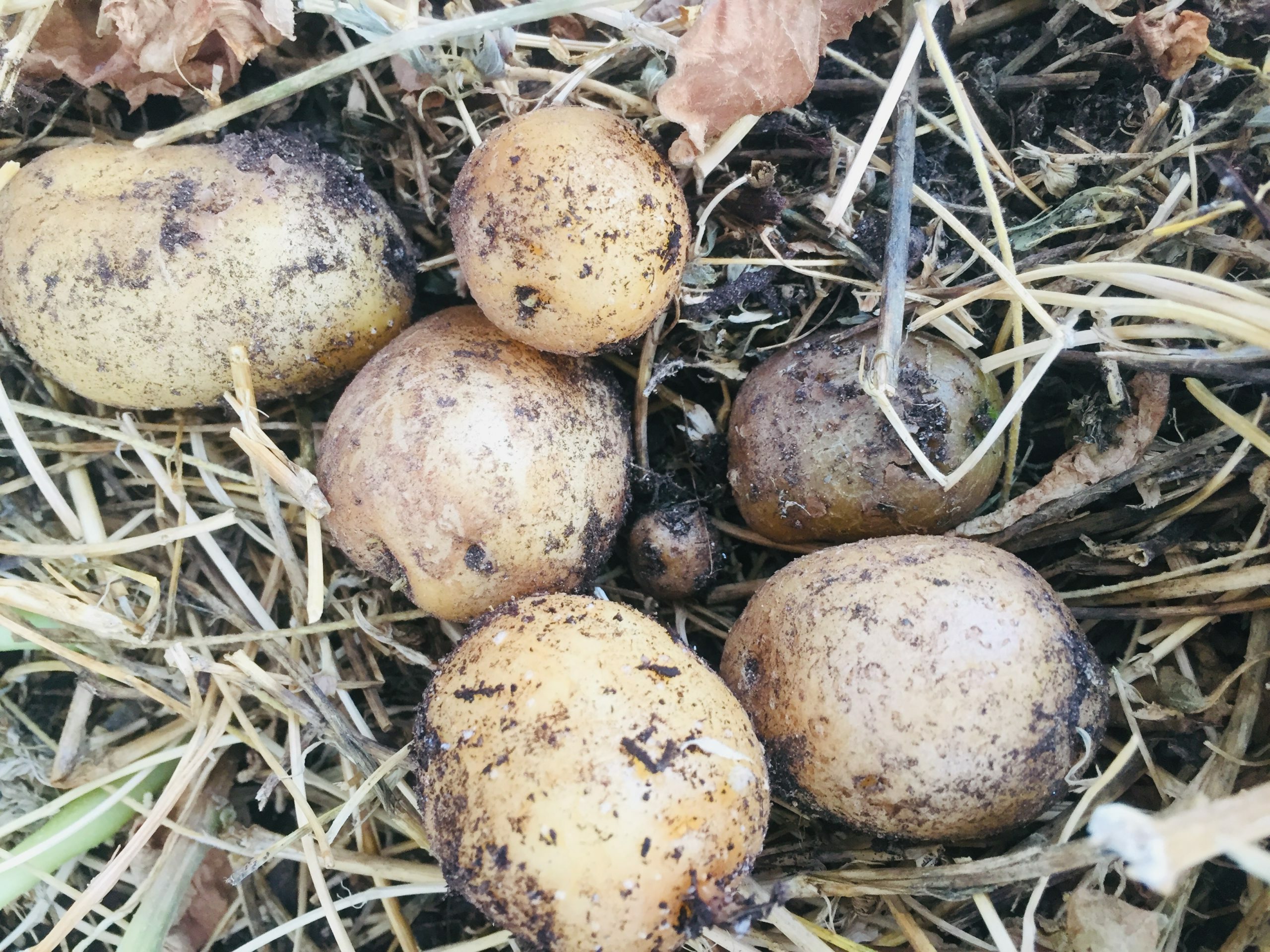Learn when to harvest potatoes. Since they’re a root crop, they aren’t visible. We’ll explain how to know when potatoes are ready to pick.
Potatoes are annuals. You plant and harvest potatoes, and then the plants die. The next season, you’ll need to replant them to grow more.
Potatoes are classified by early, mid, and late season varieties, which refers to the days to maturity. Some types can be fully formed in 65 days, while others will take 80 to 100+ days.
You should pick potatoes on a sunny day, and let them dry in the sun for a few hours before consuming.
Maximize Their Size Before Harvesting
To have the best harvest possible, it’s important to plant in a container that deep enough so you can continue hilling the potatoes as they grow. Cover up the potato plant foliage with more soil leaving only a few inches visible.
Hilling every two weeks helps keep the potatoes cool, keeps them growing in the dark, and also prevents the potatoes from growing on the surface of the soil.
Potatoes shouldn’t be exposed to light when they are growing. Otherwise, they can turn green which is due to chlorophyll. The green coloring is a sign that the potatoes started producing solanine.
This is a type of glycoalkaloid poison. Solanine is a natural response from exposure to light and is a defense mechanism against pests and diseases.
When to Harvest Potatoes
The great news is you can use a variety of ways to know when to pick potatoes.
- Days to Maturity (DTM) for the type of potato you planted
- Flowering: Indicative of early potatoes being ready
- Dying foliage: A sign that fully grown, mature potatoes are ready
- Soil check: Feel around in the soil for the size of the potato after the DTM has passed
When to harvest potatoes also depends on whether you want new potatoes. These are ‘earlies’: smaller, immature potatoes. You pick them before they are fully grown.
There are different signs to look for depending if you want early potatoes (pick when potato flowers bloom) or fully grown potatoes (look for dying foliage).
| Size of Potato | When to Harvest |
| New potatoes, not-fully grown | Harvest potatoes when the flowers bloom |
| Fully grown, mature potatoes | Look for drying, dying foliage |
Depending if you want young or fully grown potatoes, you can gently feel around in the dirt to get an idea of size before picking them.
Here we describe more fully how to know when to harvest potatoes whether you are growing potatoes in planters, in the ground, or plan to grow potatoes in 5 gallon buckets.
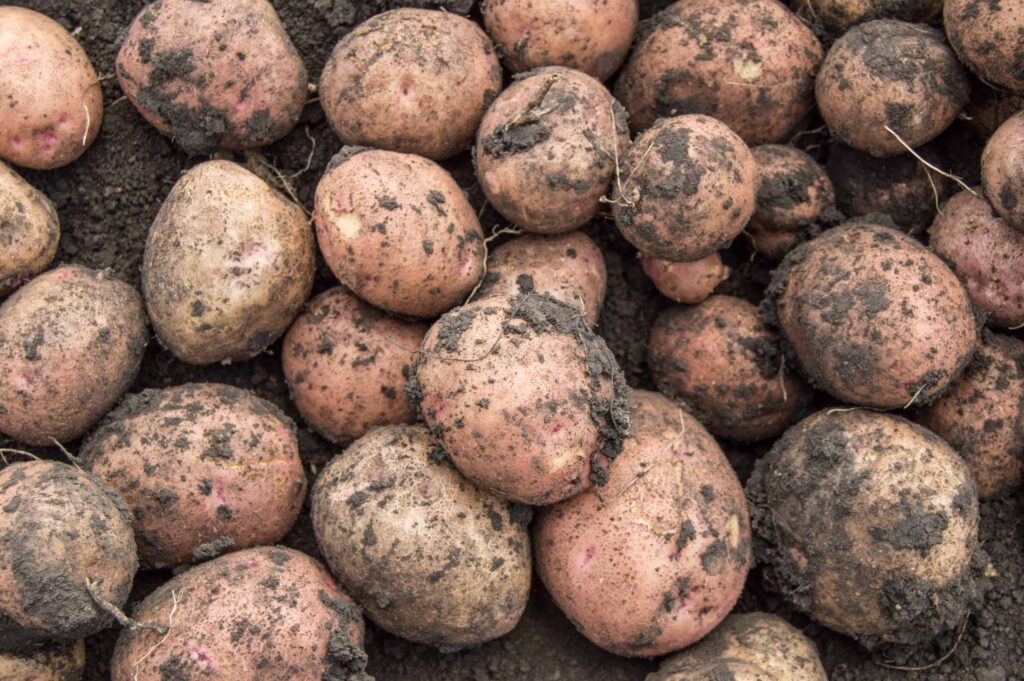
Days to Maturity
When it comes knowing when to harvest potatoes, it’s helpful to know the type of potato you planted.
If you bought mini tubers from a seed company, garden center, or nursery, be sure to note the type. If you regrow potatoes you bought from the store, also try to find out what kind they are.
This will give you an idea of when potatoes are ready to pick. Most potato varieties will be ready in 80 – 120 days. We list common potato varieties to grow below along with their days to maturity.
Flowering Potato Plants
You can also look at the flowers to help determine when to pick potatoes. When the flowers bloom, potatoes can be eaten. However, they won’t be fully developed yet.
Harvesting potatoes early is a popular practice for many different varieties, as it results in smaller tubers, which are often better for soup, stews, and roasts.
Many people refer to these earlies (referring to the time of harvest, which is normally around early summer) as a type of potato variety, but that is a common mistake.
Harvesting potatoes early means you will be harvesting them before they are fully grown. When you pick them early, they are called new potatoes, creamers, or baby potatoes.
They aren’t fully grown yet but are perfectly edible.
Reasons to Harvest Potatoes Early
Some potato farmers and gardeners intentionally harvest their potato crop before it’s officially ready in order to get new potatoes.
If you want to have smaller potatoes or if you are excited about enjoying the first of your crop, you can harvest them when the plants are flowering.
This can be as early as 70 days from first planting.
Another reason to pick potatoes early is if you live in a hot climate. If you plant them later in the spring and anticipate a hot summer, you may choose to pick them early. This way, they won’t die in the heat. In the United States, this is typically in the southern regions.
When to Harvest New Potatoes
The way to know when to cultivate the immature potatoes — they will be smaller but edible — is when the potato plants begin to flower. Harvest new potatoes as soon as plants begin to flower. This is about 70 days or 10 weeks after planting. You will be picking immature potatoes at this point.
It’s important when harvesting new potatoes to not disturb the plants.
Gently dig with your hand. Pick how many you need. Pick only what you need (unless you are picking them because of the hot weather).
It’s important to harvest them from each plant. Pick a few from each potato plant, not all from the same plant.
Then leave the remaining potatoes to grow until maturity. These will be your main crop. You can leave them to grow for several more weeks.
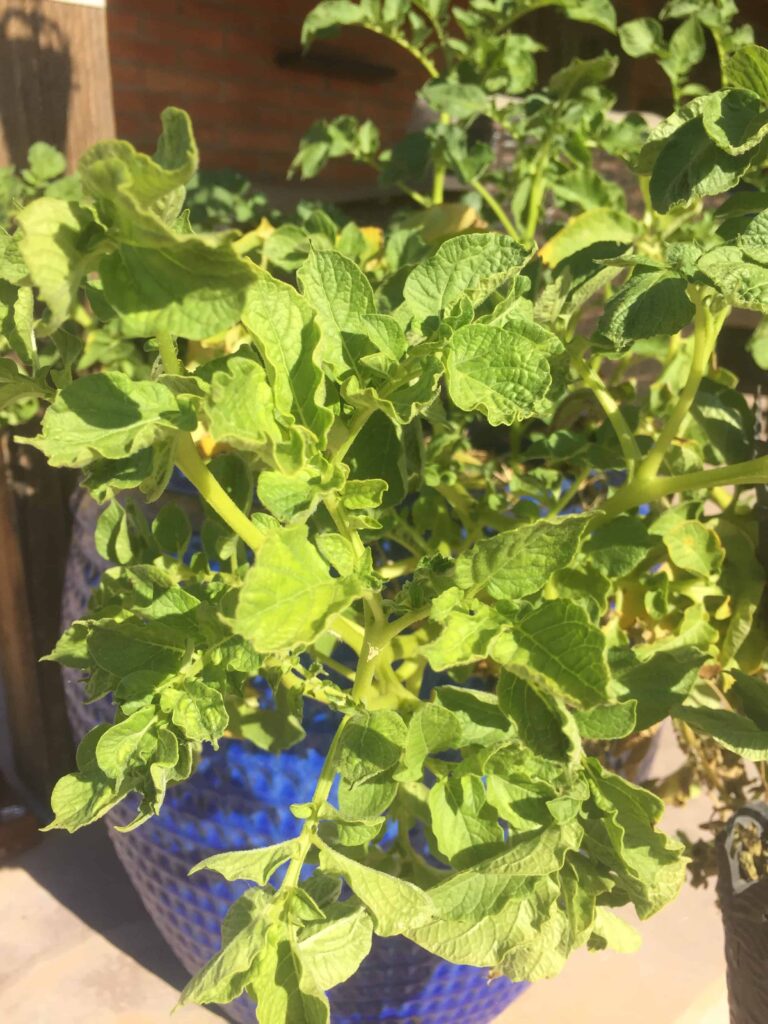
It’s best to harvest potatoes on a sunny day and let them dry in the sun for a few hours. Place them on a towel or mat, away from any animals, and dry them out. Then you can eat them.
New potatoes don’t store as well as mature potatoes so eat them soon after you pick them. Pick only what you will eat in a few days. Leave the rest to continue growing underground.
To grow a crop the following season, set aside the maincrop potatoes to regrow.
Dying Foliage
If you want to maximize the size of potatoes and get the most value out of growing them, you can let them grow until they reach their maximum size. These are considered mature potatoes.
Harvesting mature potatoes so they are larger or if you planted a lot and want to be able to store them, means you need to let them grow longer.
To know when to harvest potatoes then is to look for drying and dying foliage.
You’ll notice that the plants will have fallen over. The leaves and stems have begun to dry up and turn yellow and drying into brown. This means it’s time to pick the potatoes. The potatoes from that plant are ready to harvest. They won’t continue to grow.
Note the leaves on each plant. There can be a few days difference between plants. Don’t harvest potatoes until you’re sure they are ready.
Depending on the potato variety, this will be around 15 weeks or 105 days after planting.
Watch for…
When watering the plants weekly, you’ll start to notice:
- The flowers are no longer blooming
- The leaves are wilting and turning yellow
- Some dead foliage
After the plants turn yellow and die back, wait 2 – 3 weeks after this time.
This is when potatoes are ready to harvest. They will be fully mature. You will see the plants shrivel and start turning brown and dry.
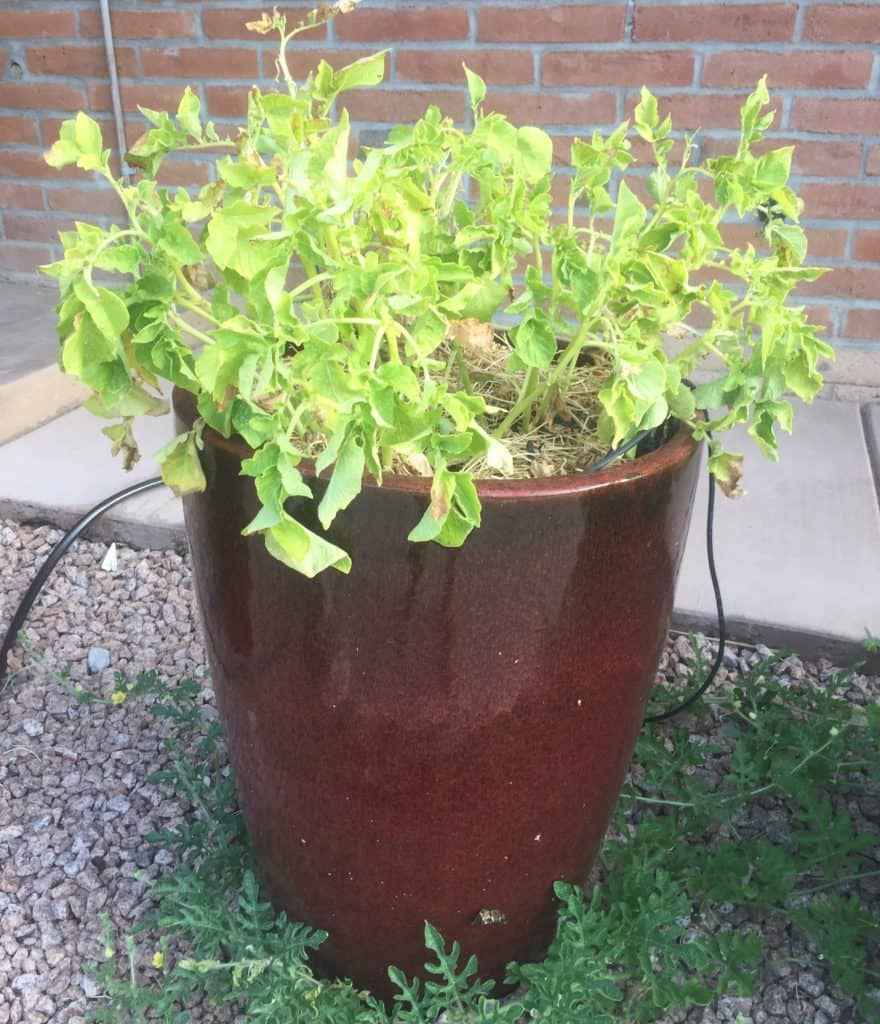
As the time nears to the expected harvest, make sure that all the plants’ tops have died before you start to dig the potatoes out of the ground. Otherwise, you risk a premature harvest.
Dig with your hand or gently with a spade or shovel. You don’t want to damage or pierce the potato skins.
Harvest potatoes on a sunny day. After cultivating, leave them out to dry in the sun for a few hours.
If you plan to not eat the potatoes right away, store them in a place that’s dry and dark. Ideal temperature should be 65 – 70 degrees F. After a week, store them in a dark area. Ideally, it should be 35 – 40 degrees F. A root cellar is ideal.
Never eat potato leaves or foliage. They are poisonous. Also, don’t wait too long to pick them as they can start to rot in the ground.
Feeling Around
If you aren’t sure when you planted them or are excited to see how big the potatoes are, you can gently reach in the dirt. Do your best not to disturb the plant. Feel to see how large one of the potatoes is.
If either the flowers are blooming or the plant is brown and wilted or dead, you can pick it if you are happy with the size.
Potato Varieties
Because of potatoes’ differing growth rates and preferences for harvest times, the terms “early” (first early), “medium” (second early), or “late” (maincrop) are used by some as an easy way of categorizing crops based on their speed to harvest.
There are specific potato varieties that farmers categorize as early and second early potatoes, because of when they’re best harvested, and in some cases, how quickly they mature.
Early / First Early
In general, experts suggest that the best time to get these yummy little new potatoes is 6 – 8 weeks after planting the crop (around when the potato flower begins to bloom), if you’re not using a specific early-maturing variety.
Some first early potatoes to grow include:
- Irish cobbler: Typically takes up to 70 days to mature.
- Norland: These can take 70 – 90 days to mature.
- Cal White Seed: 65+ days
Second Early Potatoes / Midseason
Varieties to consider harvesting as second early (midseason) potatoes include:
- Purple Majesty 80+ days
- Viking (purple or red): These can take between 70 – 90 days to mature.
- Huckleberry Gold: 80 days
- Austrian Crescent Fingerling: 80+ days
- Russian Banana Fingerling: 80+ days
- Norkotah Russet: 80+
Late / Maincrop
If you have a potato variety that’s best left as a late crop or maincrop, and you harvest too soon, you risk digging up potatoes with too fragile skin. You can confirm this by verifying if the skin rubs off too easily or is too thin.
- Red Pontiac: You can harvest these after 80 days as a second early potato; however, some consider these a late season variety. (So, when you harvest depends on your preferences.)
- Rose Finn Apple Fingerling: 105 – 135 days
Another critical detail to consider about new potatoes vs maincrop tubers is whether you plan on storing your potatoes after the harvest. If so, you’ll need to leave them in a bit longer.
Keeping the potatoes in the ground up to two weeks after die-off ensures that the skin will thicken, boosting the tubers’ resilience to the environment.
Certified Seed Potatoes
There are many types of potatoes you can buy as certified seed potatoes. They will often be organic and typically are non-GMO. Be sure to know when the potatoes will be ready to harvest before buying them.
Consider when you are planting. Some potatoes are meant to be planted in the spring for a summer potato harvest. These are called spring-planted potatoes.
Others are meant to be planted in the fall for spring harvest. These are called fall-planted.
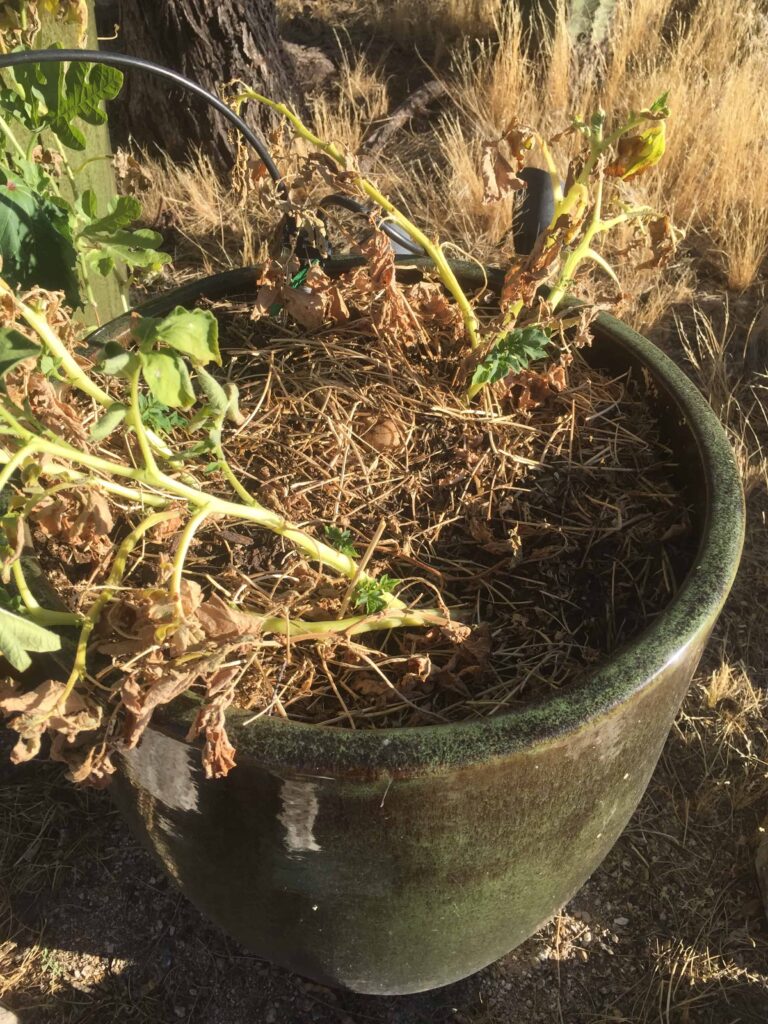
Potato Growth Cycle
One reliable method of knowing when to harvest potatoes is to get familiar with the overall growing cycle. To start, potatoes are an herbaceous annual, meaning it experiences its full growing cycle – from seed to flower, then back to seed again – in one growing season.
Once this is complete, every part of the plant, including the roots, stems, and leaves, dies off.
During the potatoes’ growth period, the leaves produce starch, which is then transferred to the stolons (an underground portion of the stems).
The stems later thicken and ultimately become tubers (the potatoes).
Up to 20 can grow from a single plant, each weighing a maximum of 10.5 oz (300 g). The size amount depends on the variety, nutrient availability, and soil moisture.
As mentioned above, harvesting season is signaled by the foliage dying off. At this point, the new tubers will sever their attachment to the stolon.
If they’re not harvested, they essentially act as a “storage” container. New plants can grow once conditions are suitable again from the tubers’ eyes (the buds on the potato).
Farmers take advantage of this natural pattern by keeping 5 – 15% of the maincrop every year to cultivate the following season’s plants.
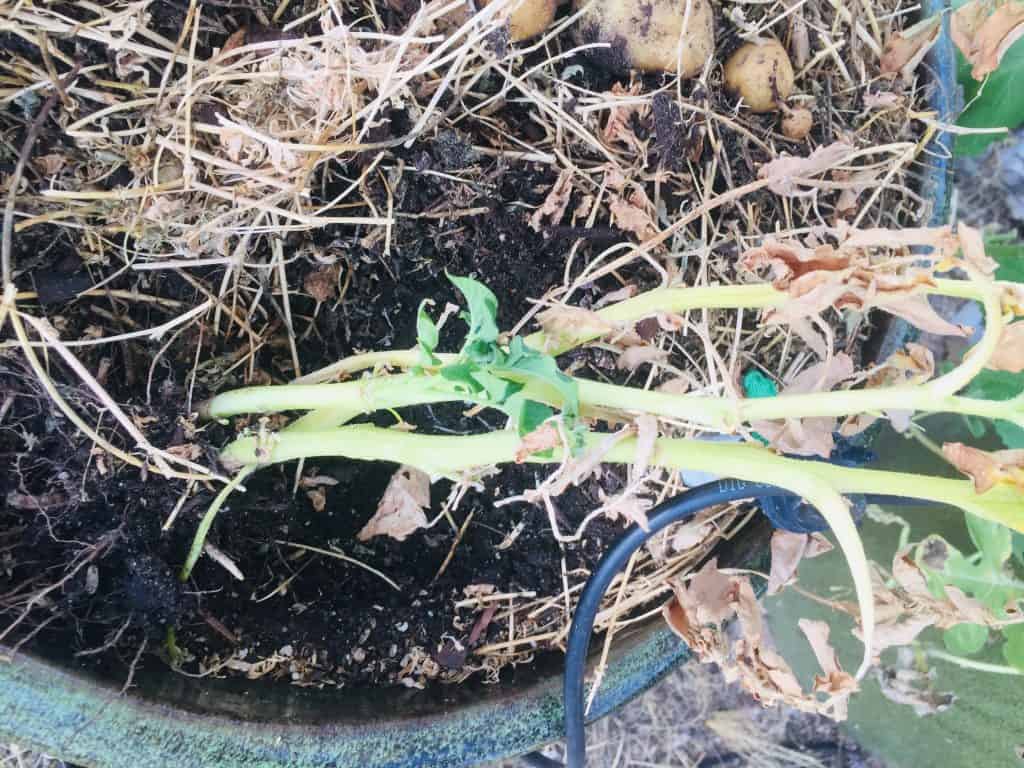
Things to Look Out for When Harvesting Potatoes
When you’re ready to harvest potatoes, keep your eye out for critical identifying features for common diseases.
Potato Diseases
These telltale signs and the diseases they indicate are described below.
- Common Scab: Potatoes will have rough lesions scattered in an irregular pattern across the surface. They’re usually tan to dark brown. It’s caused by bacteria species Streptomyces.
- Early Blight: Caused by the fungus Alternaria solani, this will cover tubers in dark, round, sunken lesions. The skin will be dry and leathery.
- Fusarium Dry Rot: An infection from the Fusarium fungi will cause internal rotting. Chances of this disease are high if the potato has been bruised or cut.
- Black Dot: Tubers infected by the fungus Colletotrichum coccodes will produce numerous, tiny black spots on the surface.
- Silver Scurf: This disease only affects the skin since it starts at the stolon. When the potatoes are infected with the fungus Helminthosporium solani, it forms small, light brown lesions on the surface, dries out, and wrinkles.
- Black Scurf: If the temperature is cool and moisture high enough, tubers and stolons will develop dark, sunken lesions from a Rhizoctonia solani infection. The tuber can die or not reach its full size due to the nutrient supply being cut off.
- Pink Rot: This Phytophthora erythroseptica infection starts at the stolon and eventually rots the tuber’s skin. When cutting the potato open, the skin will turn pink, then brown-black. This is another infection you can accidentally jumpstart by cutting the tuber during harvest, so be careful!
- Late Blight: This Phytophthora infestans infection affects both potatoes and the foliage. On the latter, you’ll notice brown to black, watery lesions on the leaves and stems. In addition, the potato can get infected through the wounds or eyes and eventually rot.
- Potato Virus Y: This viral disease will cause potatoes to develop dark brown or red ring spots, which can extend from the surface into the flesh.
Rotting Potatoes
There aren’t always outward signs of rotting. However, if you notice some of the visual signs affecting the foliage mentioned here, then it’s time to dig up those diseased plants and remove them before they harm the rest of the crop.
Don’t get too worried about blossom drop, though. Many potato varieties’ flowers fall off without there being any severe infection. However, if the falling potato flowers are accompanied by moist, dark or white spots, you need to address the problem before it spreads.
Frost
Plant after the last frost for a spring planting and early autumn for a fall planting to avoid frost.
Root crops aren’t impacted much by surface conditions like this as long as temperatures don’t drop dramatically. They are good winter vegetables to grow.
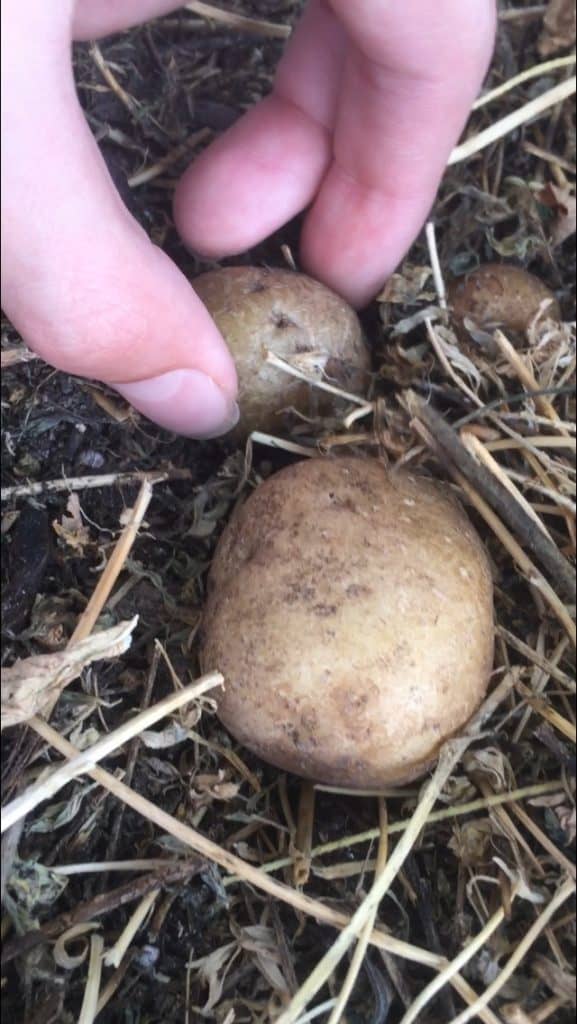
FAQs
How do you know when your potatoes are ready to harvest?
It’s important to know what potato variety you plant. Learn about the maturity date so you don’t harvest them too soon. After that, learn if you have an early, mid or late season potato. This will also help you know the approximate timeframe to harvest.
Lastly, watch for leaves wilting and turning brown. This will be specific to each are you are growing potatoes. When the leaves are dried up and dead, gently reach into the dirt to feel for the potato. You’ll get a good idea of the size to determine if you want to harvest or leave it for a few more days. The longer you leave it to grow, the more hardy it will become.
How long after potatoes flower are they ready?
Early potatoes will be ready as the plant starts to flower. If you want to wait longer until the flowers die off and the plants wilt and turn brown, it will be another 14 – 21 days.
How long can you leave potatoes in the ground?
You can leave potatoes in the ground until they are mature. Find out which potato variety you are growing to learn the days to maturity. Depending on the variety, it can be as soon as 70 days, or later, up until 120 days, on average. If you wait too long to harvest, they can rot.
Do potatoes have to flower before harvesting?
Early potatoes or earlies will be ready to harvest after the potato plant starts to flower. You can harvest them then or let them grow a few more weeks until the plant wilts and dries up. Then they are fully mature.
How many potatoes do you get from one plant?
With good conditions and planting at the proper time, you can expect to harvest 10 – 15 pounds of potatoes for every one pound of certified seed potatoes you plant.
If you plant potatoes from the grocery store, you will typically harvest less.
When Are Potatoes Ready to Harvest?
Harvesting potatoes isn’t as hard as it seems. As long as you know what signs to look out for, cultivating homegrown tubers will be a breeze. Be careful not to injure your potatoes and store them correctly to ensure they remain nutritious for you and your family.
Potatoes can be intimidating for home gardeners to cultivate on their own. After all, they are grow below the surface. Harvesting potatoes at the right time is important to maximize growth and minimize disease and rotting.
They’ve grown to their maximum size when the foliage is dried, wilted and brown.
Use these methods to know when to harvest potatoes. Since they’re a root crop, they aren’t visible. Once you understand the different ways to know when to pick potatoes, it will be easy to harvest them at the right time.

